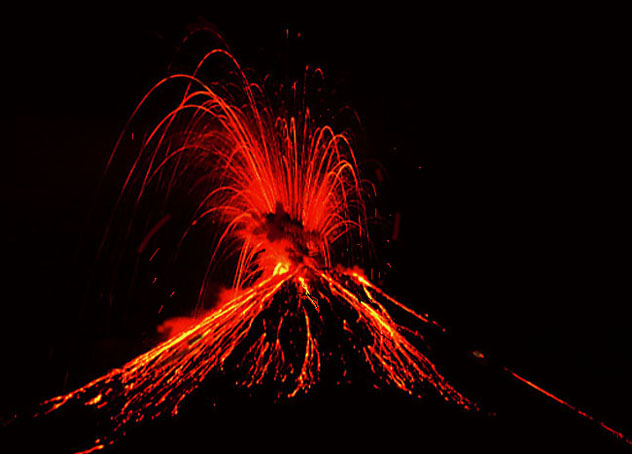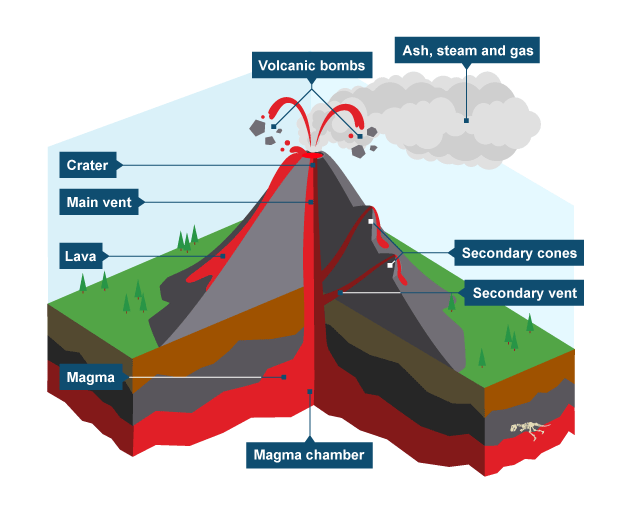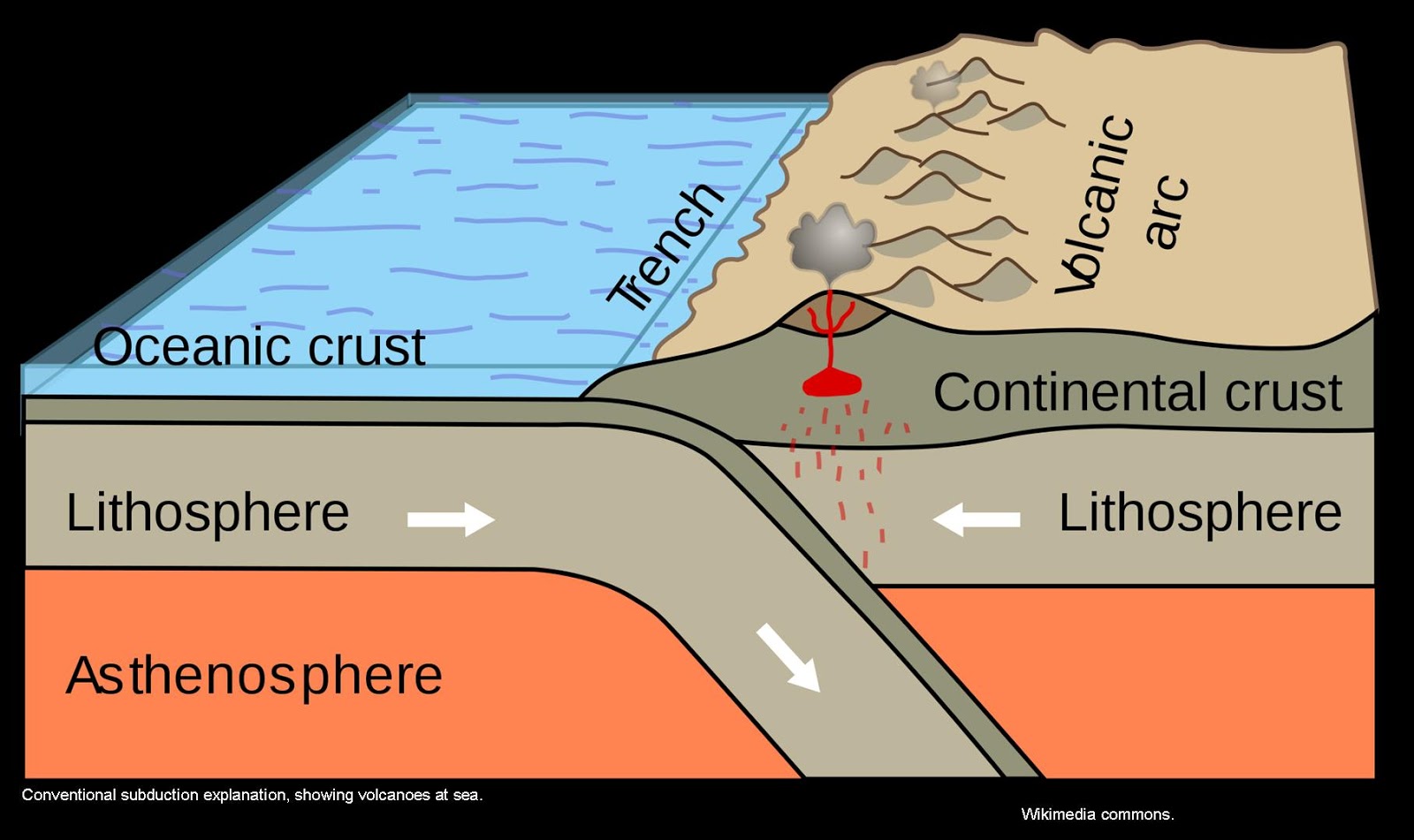Earth's Zits
Volcanoes 101
Volcanoes form when magma - a mixture of hot gas, ash, and melted rock - erupts from a crack in the earth's surface. The melted rock, called lava, flows out and hardens. As layers of lava build up, the volcanoe gets bigger. A volcano can be active, dormant, or extinct.

Inside a volcano
When pressure in the magma chamber under a volcano gets too high, the magma is forced up and out of the main vent. This is called an eruption. The force of this eruption blows rock off the top of the volcano, creating a bowl-shaped hollow, called a crater. In some volcanoes, magma also erupts from smaller vents that branch out from the main vent.

Plate tectonics

The theory of plate tectonics is a interesting story of continents drifting from place to place breaking apart, colliding, and grinding against each other. The plate tectonic theory is supported by a wide range of evidence that considers the earth's crust and upper mantle to be composed of several large, thin, relatively rigid plates that move relative to one another. The plates are all moving in different directions and at different speeds. Sometimes the plates crash together, pull apart or sideswipe each other. When this happens, it commonly results in earthquakes.
Mount Fuji, Japan
Stratovolcanoes are tall and cone-shaped, with steep sides. They are made up of lots of layers of ash and lava that have cooled and hardened. Their eruption can be very powerful and dangerous.
Mauna Loa, USA
Sheild volcanoes have gently sloping side and are formedd from thin, runny lava. Their eruptions are less explosive and much less dangerous than other volcanoes. These gentle eruptions can continue for years.
Paricutin, Mexico
Cinder cone volcanoes are the smallest and most common type of volcano. They are cone-shaped with steep sides. Their eruptions are usually not too violent.
Ngorongoro, Tanzania
These are large, circular hollows, almost like a bowl. They form when a massive eruption forces most of the magma out of the chamber under the volcano.
Sakurajima, Japan
Sakurajima, a stratovolcano on the the island of Kyushu, is one of the most active volcanoes on Earth.Sakurajima has been in nearly constant eruption. Since it's first recorded eruption in A.D. 708.
Sinabung, Indonesia
Sinabung is one of 34 active volcanoes in Sumatra, which straddles the "Pacific Ring of Fire". Mount Sinabung has been very active in terms of having explosions of ash up to 2 times a day.
